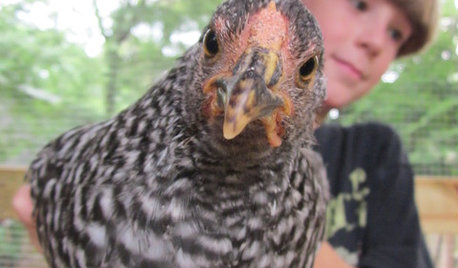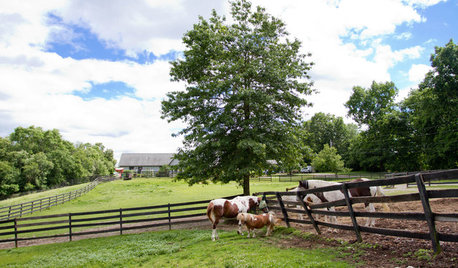'Harvesting' chickens
flgargoyle
17 years ago
Related Stories

GARDENING AND LANDSCAPINGWorld of Design: 10 Home Gardeners Show Us Their Sweet Summer Harvests
From New York to Tokyo, these gardeners have turned their yards, terraces and rooftops into places of bounty
Full Story
GREEN BUILDINGHow to Harvest Rainwater for Your Garden
Conserve a vital resource and save money by collecting stormwater for irrigation in a barrel or tank
Full Story
FARM YOUR YARDCollecting Rainwater and Eggs From a California Chicken Coop
See how a butterfly roof helps a hen home’s design soar into double-duty territory
Full Story
FARM YOUR YARD4 Farm-Fresh Chicken Coops in Urban Backyards
These Atlanta henhouses are worth crowing about for their charming, practical designs
Full Story
HOUZZ TOURSHouzz Call: Show Us Your Farmhouse!
Bring on the chickens and vegetable patches. If your home speaks country, it might appear in a featured ideabook
Full Story
LIFEEasy Green: Modern Homesteaders Stake a Claim
With more options for raising chickens, growing edibles and keeping bees than ever, suburban and city folk are rediscovering a lost art
Full Story
HOUZZ TV FAVORITESHouzz TV: An Edible Backyard in an Eichler Home
A family of 4 brings form and function to a Silicon Valley yard with vegetable gardens, chickens, beehives and more
Full Story
PETSWorld of Design: Pampered Pets and Their 10 One-of-a-Kind Homes
Fall in love with these critters and their clever living spaces, from a cat playground in France to a chicken house in the U.S.
Full Story
GARDENING GUIDESOrganic Matters: Thwart Insect Pests With Trap Crops
Add a few sacrificial plants to your garden to lure insects away from the harvest
Full Story
BARN HOMESHouzz Tour: An Energy-Efficient Barn Graces the Nebraska Landscape
Passive-house technologies and a rain-harvesting and greywater system conserve natural resources in this weekend country home
Full Story





Roberta_z5
suenh
Related Professionals
Eden Prairie Landscape Architects & Landscape Designers · Jennings Landscape Architects & Landscape Designers · Harvey Landscape Architects & Landscape Designers · Fort Myers Landscape Contractors · Fuquay-Varina Landscape Contractors · Lebanon Landscape Contractors · Pahrump Landscape Contractors · Tigard Landscape Contractors · Canton Fence Contractors · Lexington Fence Contractors · Monrovia Fence Contractors · Sunrise Manor Fence Contractors · West Covina Fence Contractors · Dearborn Decks, Patios & Outdoor Enclosures · Redmond Decks, Patios & Outdoor Enclosureshotzcatz
camellia47
Dibbit
littlereo
balsam
undercover_owl
ainsof
dct1321
msjay2u
cooknwoman
gardengalrn